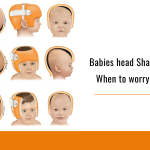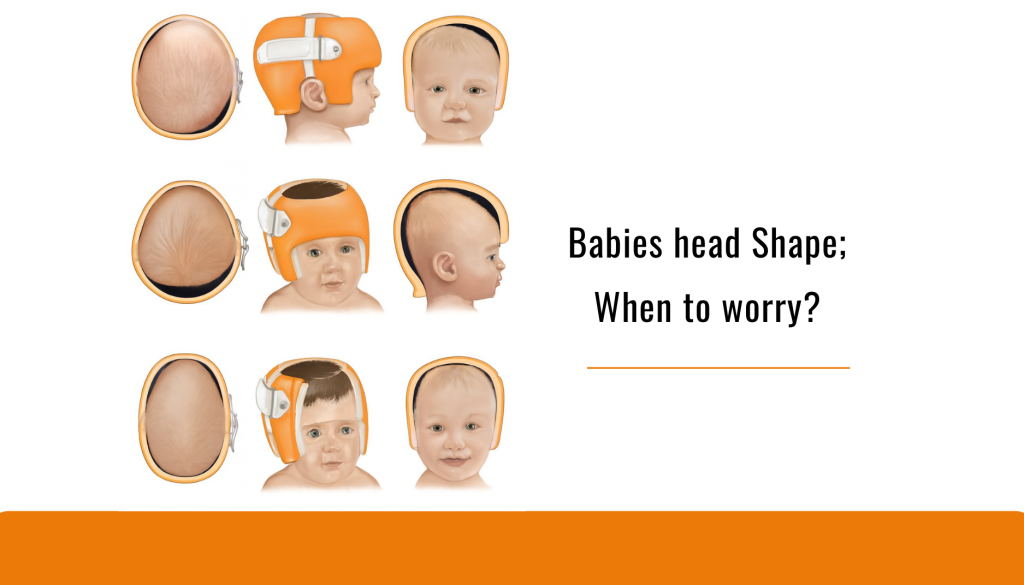
Many parents are concerned about a baby’s misshapen head, known as plagiocephaly or brachycephaly. While it can look alarming, it is usually a benign condition that does not affect brain development and often resolves independently with simple repositioning techniques.
The key is to know when a change in head shape is normal and when it warrants a visit to the doctor.
Knowing baby flat head when to worry and why it happens?
A baby’s skull is not a single, solid bone. At birth, it comprises several flexible bony plates separated by soft spots called sutures.
This design is a marvel of nature. This feature allows the skull to compress for passage through the birth canal and, even more critically, to accommodate the rapid brain growth that occurs during the first year of life.
However, this flexibility also makes the skull susceptible to external pressure, leading to a condition commonly referred to as flat head syndrome. The most common causes of this are:
Sleeping position: As a result of the “Back to Sleep” campaign’s efforts to prevent Sudden Infant Death Syndrome (SIDS), infants now spend a significant amount of time sleeping on their backs. This is the single most common reason for a flattened area on the back of the head.
Time in “Containers”: Extended periods in car seats, swings, bouncers, and strollers can put constant pressure on the same part of the baby’s head, contributing to the flattening.
Torticollis: When a baby has this condition, their neck muscles are tight or stiff on one side, resulting in difficulty turning their head. This leads to a strong preference for resting their head in a single position, which can cause severe flattening on one side.
Womb position and prematurity: Sometimes, a baby’s head is already misshapen at birth due to pressure in the womb, especially in cases of multiple births or a lack of amniotic fluid.
Premature babies are also more susceptible because their skulls are softer, and they may spend more time in a single position in the Neonatal ICU.
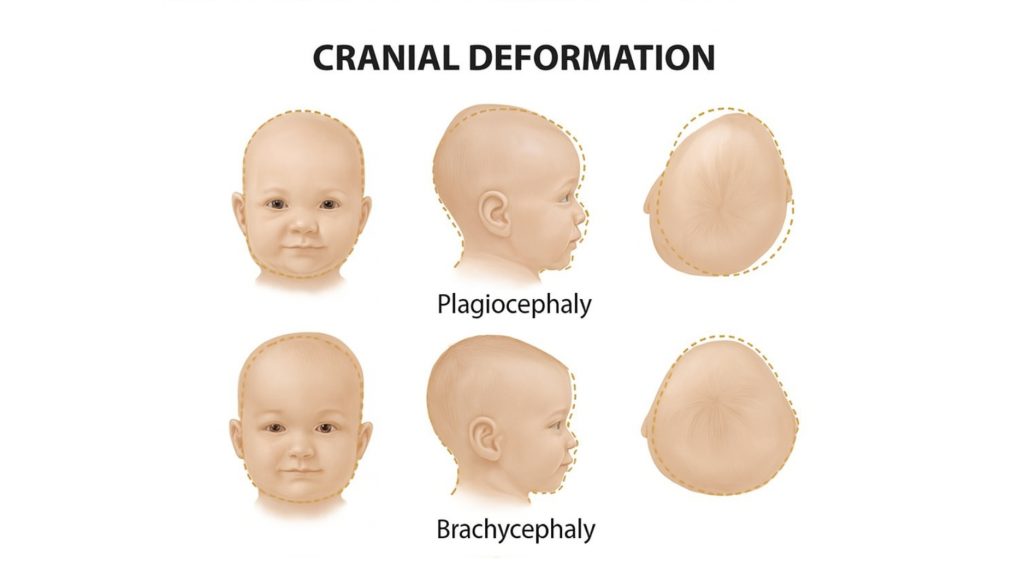
Babies' Head Shapes: When to Worry? Differentiating from a more serious condition
Most flat head cases are positional plagiocephaly or brachycephaly, which are cosmetic and do not impact brain development.
However, in rare cases, a misshapen head can signify a more serious condition called craniosynostosis. This is a congenital disability where one or more skull sutures fuse prematurely before or shortly after birth.
Unlike flat head syndrome, which is caused by external pressure, craniosynostosis is an internal issue that can restrict brain growth and potentially lead to developmental problems if left untreated. Signs of craniosynostosis include:
- A rugged, raised ridge felt along a fused suture line.
- An unusual head shape that does not improve with repositioning.
- A lack of a soft spot (fontanelle) on the baby’s head.
Because it can be difficult to tell the difference, it’s crucial to consult a paediatrician if you have any concerns. To determine the cause of the head shape and recommend a suitable course of action, a physical exam and possibly imaging tests will be performed.
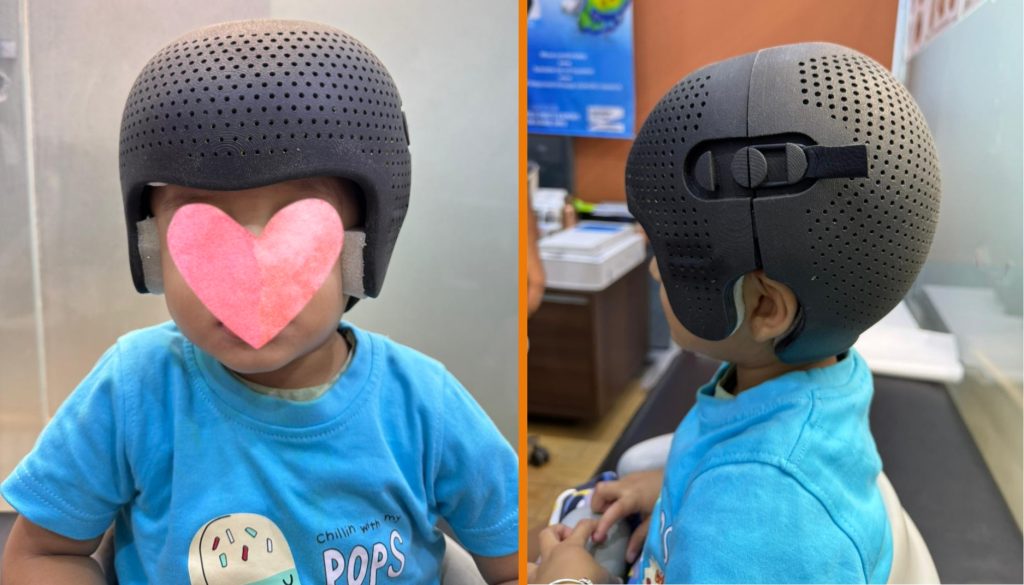
Proactive steps to prevent and correct flat head syndrome
If you discover a flat spot on your baby’s head, don’t be alarmed. There are many simple and effective measures you can take to help correct it.
1- Plenty of tummy time: This is the most effective preventative measure. To help with future development, such as sitting and crawling, supervised tummy time while your baby is awake strengthens their neck, shoulder, and core muscles while also relieving pressure on the back of their head.
Aim for at least 30 minutes of tummy time daily, broken up into several sessions.
2- Varying positions:
- In the crib: Place your baby at alternate ends of the crib on different nights. Babies naturally turn their heads towards the room’s light or activity, encouraging them to turn their heads in different directions.
- When holding and feeding: Alternate the side you hold and feed your baby. This ensures both sides of their head get equal attention.
- 3- Limit “Container” time: While car seats and swings are convenient, try limiting your baby’s time. Opt for carrying or holding your baby more often.
- 4- Physical therapy: A paediatrician may recommend physical therapy if a stiff neck (torticollis) contributes. A physical therapist can teach gentle stretches to improve your baby’s neck mobility.
- 5- Helmet therapy: A doctor may recommend a cranial molding helmet or band for moderate to severe cases that do not respond to repositioning.
These custom-fitted devices apply gentle pressure to encourage the skull to grow into a more rounded shape. They are most effective when started between 5 and 6 months of age while the skull is still soft and pliable.
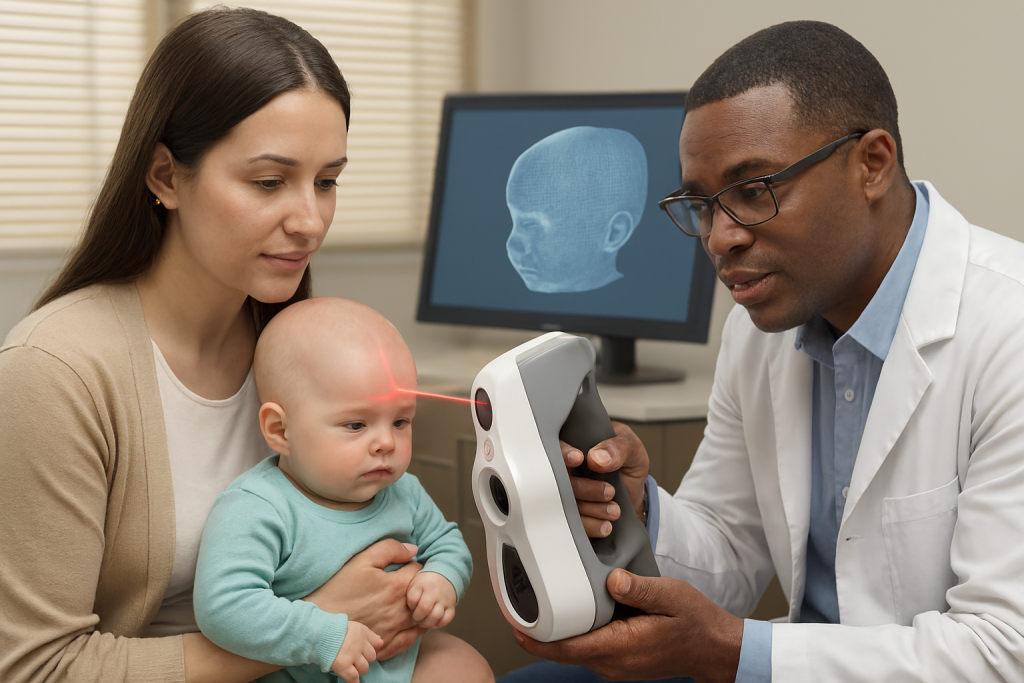
Post-operative cranial orthoses
For infants who have undergone cranial surgery, such as craniosynostosis, a cranial remolding orthosis, also known as a helmet or band, is often recommended as part of the post-operative care.
Specialists use an FDA-approved 3D scanner, a safe and painless data-imaging laser, to take a quick 3-D image of the baby’s head.
This image is used to custom-design the orthosis. The program collaborates with the infant’s surgeons to monitor the treatment, make necessary adjustments, and ensure proper head growth over time. The program accepts new patients by physician referral.
At Xtremity, your baby’s well-being is our top priority. While flat head syndrome is a common and often harmless condition, a professional evaluation from our experts can provide the peace of mind you need.
Our team at Xtremity is here to offer the expert guidance and personalised care necessary to ensure your baby’s head shape develops correctly.
Ready to get a professional opinion from a leading specialist at Xtremity? Book an appointment now.
FAQ
Yes, it can. For moderate to severe cases that continue beyond 4-6 months, helmet therapy is often recommended, whereas repositioning is most effective early on. The skull remains pliable for the first year.
A flat head, or flat head syndrome, is a flattened area on a baby’s skull. It is medically known as plagiocephaly (a flat spot on one side) or brachycephaly (a flat spot on the back). It is caused by external pressure on the soft skull bones.
The most common cause is a baby lying on its back for long periods. Other factors include prematurity, a tight womb, and stiff neck muscles (torticollis).
phaly (a flat spot on the back). It is caused by external pressure on the soft skull bones.
No, it is not. The condition is prevalent and is often a result of parents following safe sleep guidelines, which advise placing babies on their backs to prevent SIDS.
Mild cases often correct themselves as the baby becomes more mobile. However, moderate to severe cases may require active intervention with repositioning techniques or helmet therapy.
A flat head usually has no long-term effects on a child’s brain development or cognitive function. It is primarily a cosmetic issue.
About Us
Xtremity Prosthetics and Orthotics is a specialized health clinic where treatment is provided by a specialized team which comprises allied health professionals as well as medical professionals giving a multidisciplinary approach towards prosthetic and orthotic rehabilitation care.


